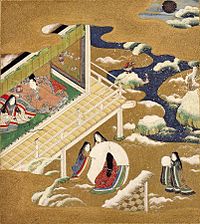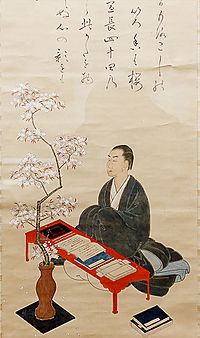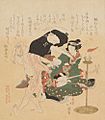Mono no aware facts for kids
Mono no aware (物の哀れ) is a Japanese literary term. It means "the pathos of things" in English. Pathos is the power in literature that creates feelings of sorrow, pity and tenderness. Mono no aware is a very important concept when reading old literature, so that the reader can understand the importance and beauty of the literature. It is used to express the keen emotion and pathos of a piece of literature and the feeling it gives the readers' senses, such as the description of a sound or scenery. The Tale of Genji, said to be the world's oldest novel, is a good example of literature that gives its readers the sense of mono no aware.
Origin
The term mono no aware was first used by Motoori Norinaga (1730-1801) to describe Heian Period (794 AD - 1185 AD) literature, especially Tales of Genji.
In contemporary culture
Notable manga artists who use mono no aware–style storytelling include Hitoshi Ashinano, Kozue Amano, and Kaoru Mori. In anime, both Only Yesterday, by Isao Takahata and Mai Mai Miracle, by Sunao Katabuchi make note of the passing of time in a gentle way by presenting the main plot against a parallel one from the past. In addition, the Japanese director Yasujiro Ozu was well known for making a sense of mono no aware.
Images for kids
See also
 In Spanish: Mono no aware para niños
In Spanish: Mono no aware para niños




